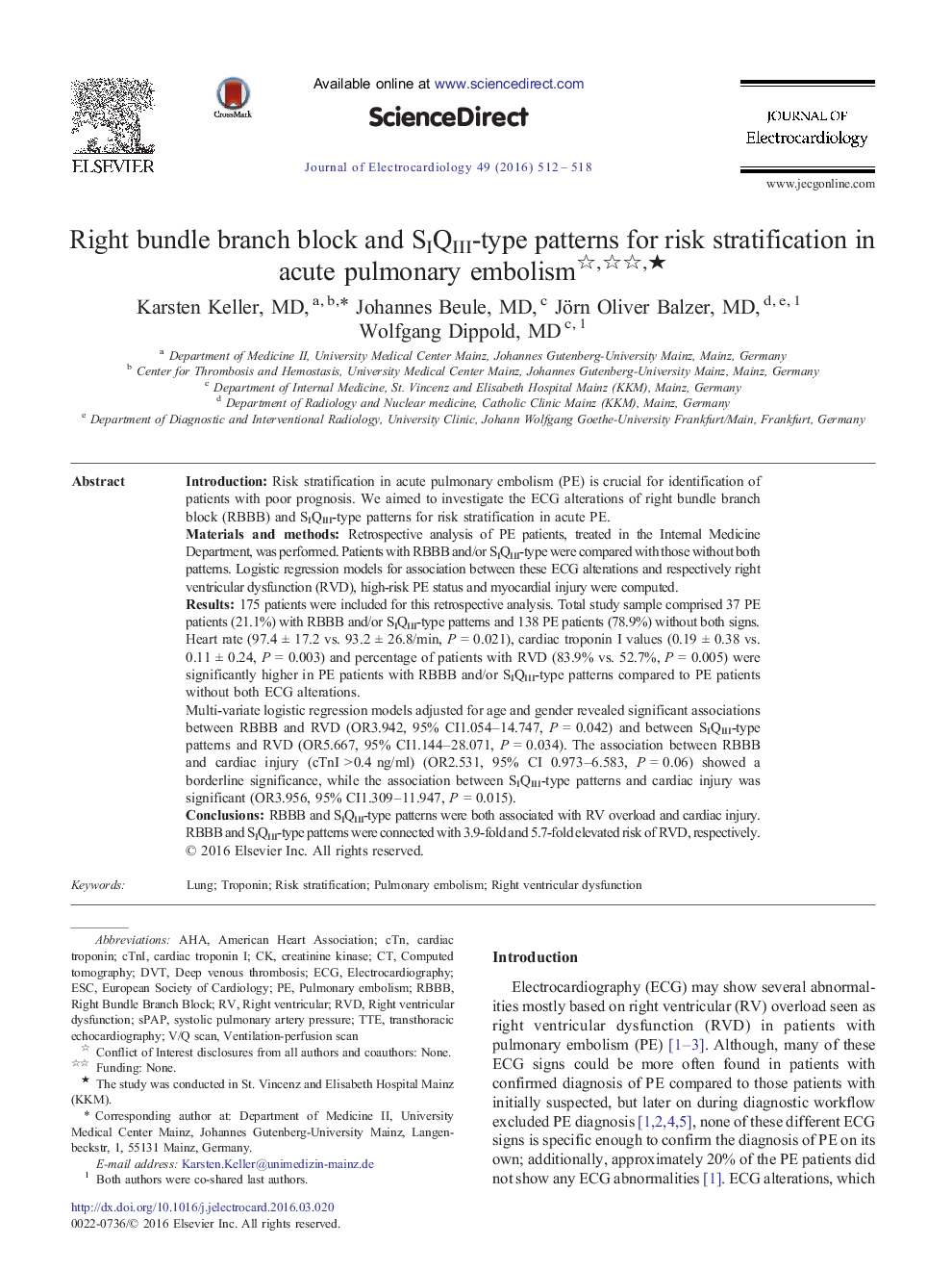| Article ID | Journal | Published Year | Pages | File Type |
|---|---|---|---|---|
| 5986124 | Journal of Electrocardiology | 2016 | 7 Pages |
â¢Risk stratification in acute pulmonary embolism is crucial for identification of patients with poor prognosis.â¢Electrocardiography in patients with pulmonary embolism can show several abnormalities related to right ventricular strain.â¢Right bundle branch block (RBBB) and SIQIII-type are both associated with right ventricular overload and cardiac injury.â¢RBBB and SIQIII-type are connected with 3.9-fold and 5.7-fold elevated risk of RVD, respectively.
IntroductionRisk stratification in acute pulmonary embolism (PE) is crucial for identification of patients with poor prognosis. We aimed to investigate the ECG alterations of right bundle branch block (RBBB) and SIQIII-type patterns for risk stratification in acute PE.Materials and methodsRetrospective analysis of PE patients, treated in the Internal Medicine Department, was performed. Patients with RBBB and/or SIQIII-type were compared with those without both patterns. Logistic regression models for association between these ECG alterations and respectively right ventricular dysfunction (RVD), high-risk PE status and myocardial injury were computed.Results175 patients were included for this retrospective analysis. Total study sample comprised 37 PE patients (21.1%) with RBBB and/or SIQIII-type patterns and 138 PE patients (78.9%) without both signs.Heart rate (97.4 ± 17.2 vs. 93.2 ± 26.8/min, P = 0.021), cardiac troponin I values (0.19 ± 0.38 vs. 0.11 ± 0.24, P = 0.003) and percentage of patients with RVD (83.9% vs. 52.7%, P = 0.005) were significantly higher in PE patients with RBBB and/or SIQIII-type patterns compared to PE patients without both ECG alterations.Multi-variate logistic regression models adjusted for age and gender revealed significant associations between RBBB and RVD (OR3.942, 95% CI1.054-14.747, P = 0.042) and between SIQIII-type patterns and RVD (OR5.667, 95% CI1.144-28.071, P = 0.034). The association between RBBB and cardiac injury (cTnI > 0.4 ng/ml) (OR2.531, 95% CI 0.973-6.583, P = 0.06) showed a borderline significance, while the association between SIQIII-type patterns and cardiac injury was significant (OR3.956, 95% CI1.309-11.947, P = 0.015).ConclusionsRBBB and SIQIII-type patterns were both associated with RV overload and cardiac injury. RBBB and SIQIII-type patterns were connected with 3.9-fold and 5.7-fold elevated risk of RVD, respectively.
